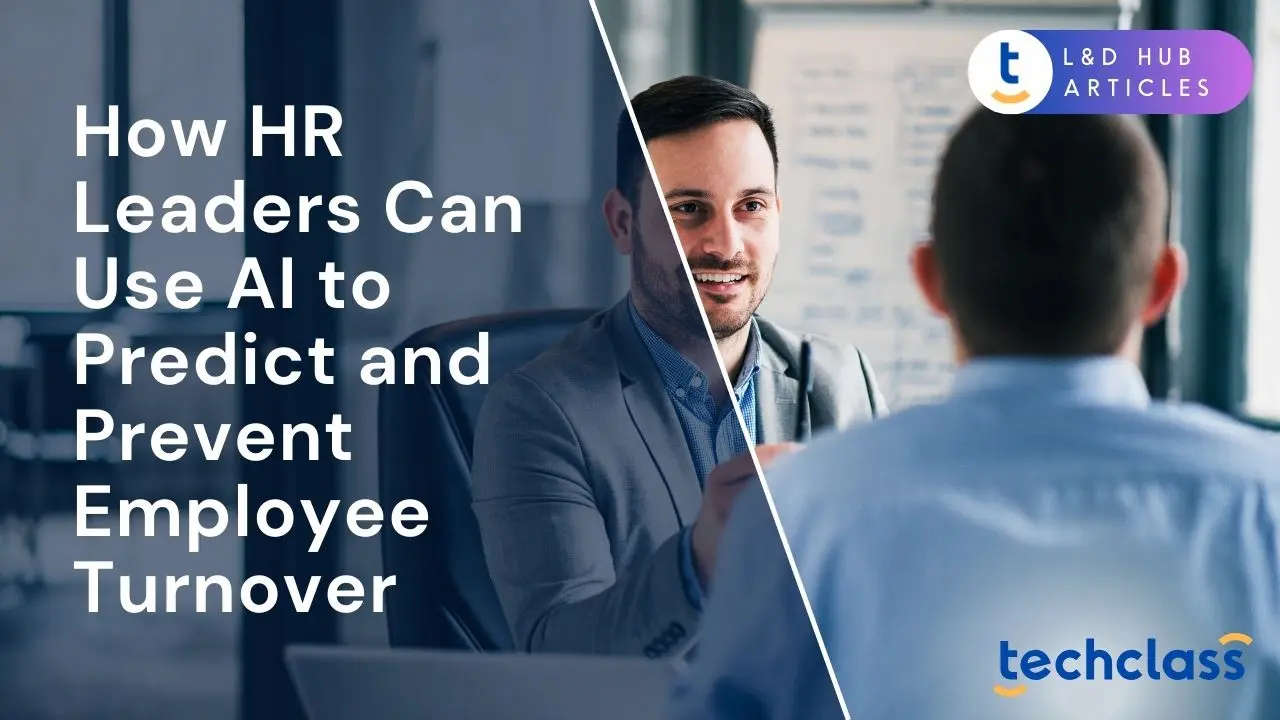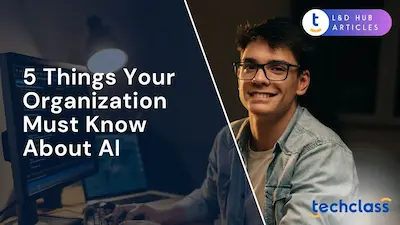
Employee turnover remains a costly and persistent challenge for organizations. Replacing a single employee can cost anywhere from 90% to 200% of their annual salary, when accounting for recruiting, training, lost productivity, and impact on morale. In the United States alone, total turnover costs are estimated around $160 billion annually. Such high stakes have HR leaders and executives seeking smarter, proactive solutions to retain talent. This is where artificial intelligence (AI) is emerging as a game-changer. By leveraging AI-driven analytics, companies can predict which employees are at risk of leaving and intervene early, potentially cutting turnover rates dramatically. In fact, organizations using AI to predict and prevent turnover have reduced their attrition rates by up to 50%.
This article explores how HR professionals, CISOs, business owners, and enterprise leaders across industries can harness AI to anticipate employee departures and strengthen retention. We’ll discuss why turnover prediction is crucial, how AI-powered tools work in this domain, real-world results achieved, benefits and challenges of these technologies, and best practices for implementing them ethically and effectively in your organization.
Employee turnover isn’t just an HR headache, it’s a critical business issue that hits the bottom line. When an employee leaves, the organization incurs recruiting expenses, onboarding and training costs, lost productivity, and potentially even lost clients or knowledge. Studies show these factors combined can cost companies roughly 150–200% of the departing employee’s salary on average. For example, replacing an employee earning $50,000 might cost $75,000–$100,000 once all factors are considered. Additionally, team morale and workload suffer when colleagues absorb extra duties, often leading to further productivity declines.
Beyond direct costs, high turnover can damage an organization’s reputation. If a company develops a reputation as a high-churn workplace, it struggles to attract top talent, surveys indicate 60% of people would refuse a job at a company with a bad reputation, even with higher pay. Clearly, preventing unnecessary departures is critical for both financial and strategic reasons. Traditionally, HR has relied on exit interviews and annual engagement surveys to understand why people leave, but these methods diagnose problems after the damage is done. To truly get ahead of turnover, organizations need to predict who might leave next and why, so they can intervene in time.
AI training is giving HR leaders something akin to a crystal ball for employee retention. AI-driven people analytics platforms use machine learning algorithms to analyze myriad data points about employees and detect patterns linked to turnover risk. These systems can crunch large volumes of historical HR data, far beyond what a human analyst could handle, to find subtle signs that often precede a resignation.
What data feeds these predictive models? It spans both objective metrics and behavioral signals. Common inputs include an employee’s tenure, role, performance reviews, promotion history, absenteeism, and training records. AI also examines engagement indicators like employee survey responses, feedback scores, and even sentiment in written comments or emails. Some advanced systems incorporate communication and collaboration patterns (e.g. email or Slack activity, network relationships) to gauge involvement and sentiment. External market data, such as job market demand for certain skills or benchmarking of compensation, can also be factored in. By integrating these diverse data streams, AI models learn what combinations of factors have historically led to departures at the company.
For example, an AI might flag that employees who haven’t had a role change in two years, have below-average engagement scores, and work under managers with high attrition rates are at elevated flight risk. These algorithms (often using techniques like decision trees, random forests, or neural networks) assign a “flight risk” score to employees based on patterns learned from past attrition cases. Importantly, modern AI models continue refining their predictions as new data comes in, enabling real-time analysis of workforce sentiment. This means HR can get early warnings, potentially months before a valued employee hands in their notice.
Crucially, AI can also uncover less obvious predictors that traditional analyses miss. For instance, natural language processing (NLP) might detect a decline in positive language in an engineer’s project updates, correlating with disengagement. Or social network analysis could reveal that if a well-connected team member leaves, their close colleagues’ turnover risk spikes. By identifying complex patterns and hidden drivers of attrition, AI provides deeper insights than the one-size-fits-all metrics of the past.
Predicting who is likely to leave is only half the battle, the real goal is preventing unwanted turnover. AI analytics empower HR and business leaders to move from reactive to proactive retention strategies. Once a predictive model highlights certain employees as “at risk,” HR can intervene with personalized measures to re-engage those individuals.
What do these preventive actions look like? They can be as simple as a manager’s check-in conversation or as structured as a formal retention plan. For example, if AI flags a high-performing developer who’s become disengaged, the company might respond by discussing new career opportunities or offering them a stretch assignment to renew their interest (indeed, IBM reported saving at-risk employees by offering stretch goals and mentorship after AI identification). If the issue is work-life balance, adjusting workloads or providing flexibility might be effective. For employees feeling under-recognized, initiatives like public recognition or compensation reviews could boost morale. The key is that AI pinpoints the likely causes of an employee’s dissatisfaction, sometimes by indicating which factors contributed to past resignations, so that HR can tailor the solution.
AI tools can even suggest specific retention actions. Some platforms generate “stay plans” or recommendations for each at-risk employee, drawing on what has worked with similar profiles in the past. For instance, an AI-driven system might recommend a leadership training program to an employee who craves growth, or alert management to discuss succession planning with someone who feels their advancement is limited. In essence, predictive analytics give HR the insight to treat the disease, not just the symptoms, addressing underlying issues like career stagnation, misalignment of roles, or manager-employee frictions before they drive the employee out the door.
Additionally, AI analytics help in a broader sense by revealing workplace trends that need attention. If data shows a particular department has spiking turnover risk, executives can investigate systemic causes (e.g. a toxic team culture or overwork) and remedy them company-wide. The end result of using AI in this way is a shift in HR’s role: from scrambling to fill unexpected vacancies to strategically building a culture and environment where employees want to stay.
Adopting AI for turnover prediction offers significant advantages over traditional approaches. Here are some key benefits for HR and business leaders:
In short, AI-based turnover prediction equips HR with a much more powerful toolkit for talent retention than traditional methods. Rather than relying on yearly surveys or intuition, leaders get evidence-based, timely guidance on where to focus retention efforts for maximum impact.
While AI offers promising capabilities, HR leaders must navigate several challenges and ethical considerations when using it to predict turnover:
In addressing these challenges, close collaboration between HR, IT, and security leaders (such as the CISO) is important. Data security and governance must be in place to protect sensitive employee information. By tackling data and ethics issues head-on, organizations can implement AI turnover prediction in a responsible, effective manner.
For enterprise leaders considering AI to improve retention, here are some best practices to ensure a successful implementation:
By following these practices, HR leaders can effectively integrate AI analytics into their retention strategy, enhancing rather than disrupting their existing processes. The goal is to create a human+machine synergy, using AI’s predictive power alongside human understanding of organizational culture and individual nuances.
Employee turnover will never be eliminated, after all, career changes and retirements are a natural part of working life. However, the high costs and disruption associated with unwanted turnover can be mitigated with the right proactive approach. AI has given HR leaders an unprecedented ability to look into the future of their workforce. By predicting who might leave and understanding why, organizations can shift from a reactive stance to a proactive one, addressing issues before they result in resignations.
Importantly, AI is not a magic wand but a powerful tool in the hands of skilled HR professionals. Success comes from combining data-driven insights with empathetic leadership and a supportive workplace culture. Early adopter companies have reported promising outcomes, for instance, IBM’s HR analytics improved retention so much that employee loyalty rose by 25% after deploying AI, and Deloitte achieved a 15% increase in retention rates through AI-based engagement initiatives. These examples illustrate that when used thoughtfully, AI can directly translate into tangible improvements in keeping your best talent.
For HR and enterprise leaders, the message is clear: leveraging AI to predict and prevent turnover is moving from a cutting-edge idea to a mainstream best practice. With careful implementation, addressing ethical concerns, and collaboration across leadership (including IT and security for data governance), AI-driven people analytics can become a strategic asset. It enables a shift toward evidence-based, personalized talent management that not only saves costs but also fosters a more engaged, loyal workforce. In the competitive landscape for talent, such forward-looking HR capabilities might be the decisive factor that sets your organization apart as a place where employees choose to stay and grow.
AI uses machine learning algorithms to analyze data such as tenure, performance reviews, engagement scores, and communication patterns. It identifies patterns that indicate a higher risk of resignation, assigning a “flight risk” score to employees and updating predictions in real time.
These models use both objective metrics (e.g., tenure, promotions, absenteeism) and behavioral indicators (e.g., survey feedback, sentiment analysis, communication activity). Some also include external market data like salary benchmarks and job demand trends.
Once at-risk employees are identified, HR can take targeted actions such as career development opportunities, workload adjustments, mentorship programs, or recognition initiatives. AI also helps uncover systemic issues affecting whole departments.
Key benefits include early detection of risk, greater prediction accuracy, deeper insights into causes, scalability across large workforces, cost savings from reduced attrition, and continuous learning as models improve over time.
HR must ensure data privacy, avoid bias in predictions, maintain transparency about data usage, and combine AI insights with human judgment. Ethical use involves compliance with legal standards and protecting employee trust.


